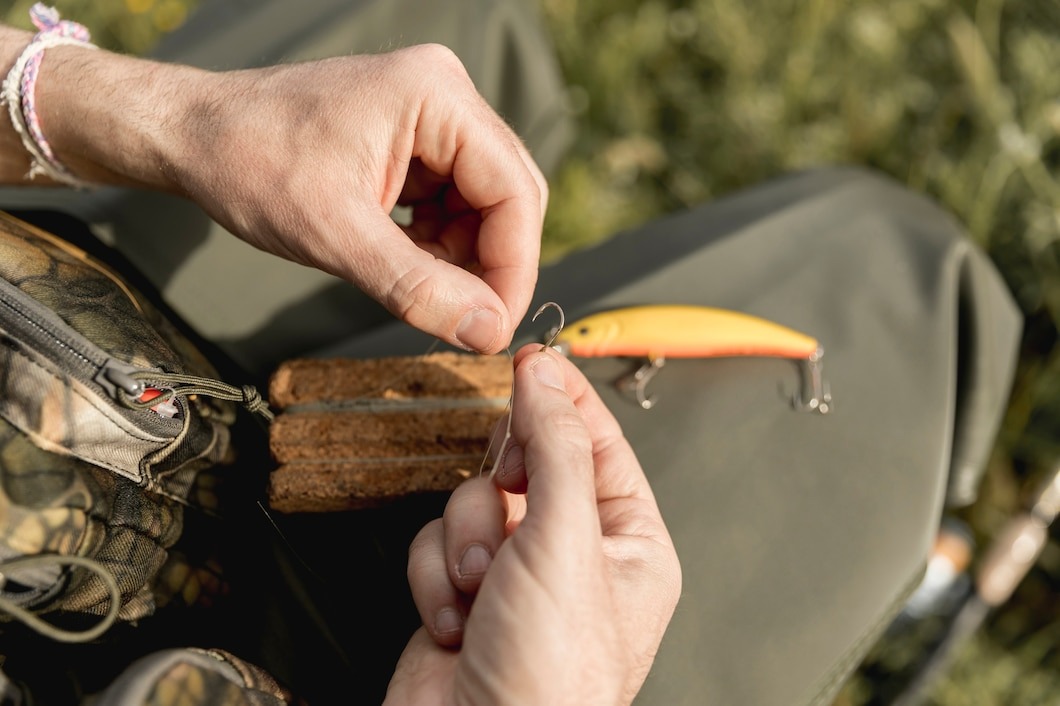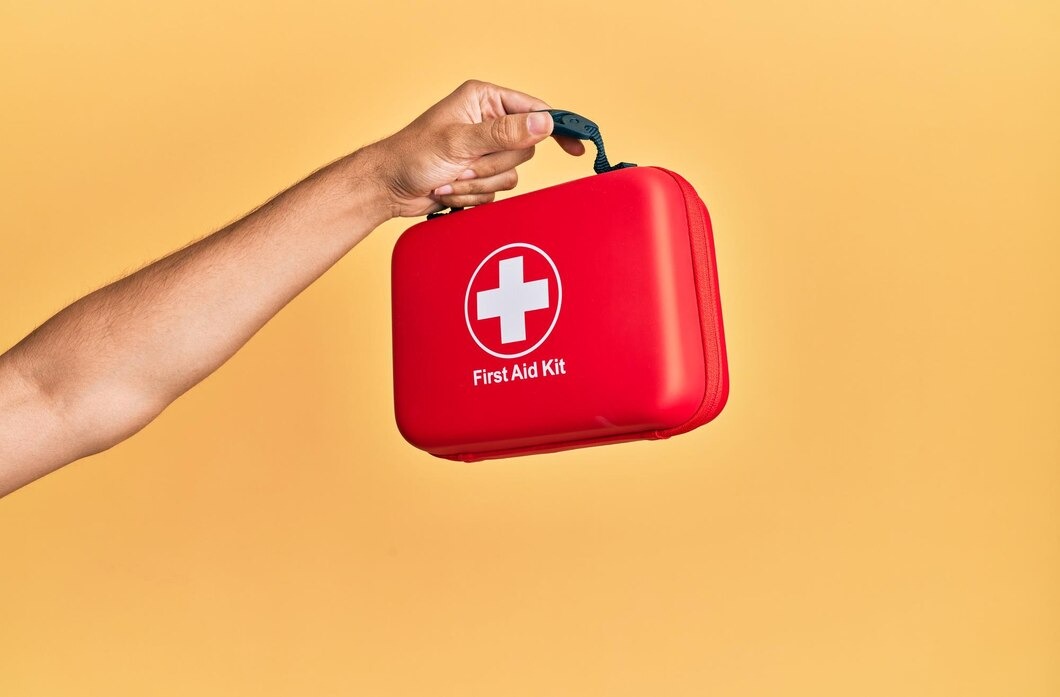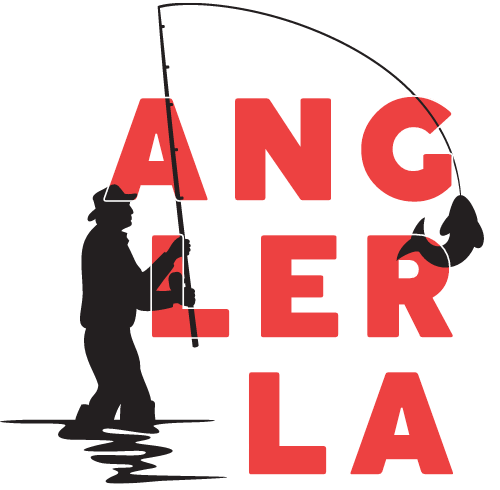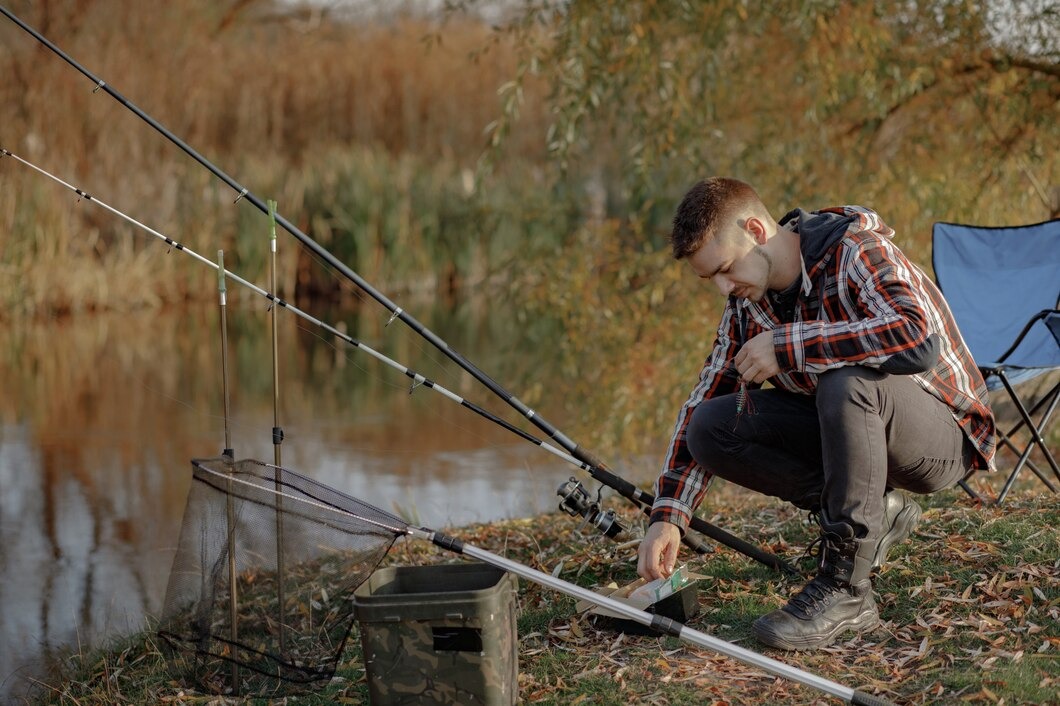Heading out to a remote fishing spot sounds like the ultimate escape. No crowds, no noise, just you, the water, and hopefully a few fish willing to bite.
But that isolation also means being far from immediate help when something goes wrong. Planning for emergencies isn’t optional—it’s essential.
Essential First Aid Skills for Remote Anglers
Accidents happen. Hooks lodge into fingers, slippery rocks send people tumbling, and dehydration sneaks up faster than expected.
Knowing a few critical first-aid techniques could be the difference between a minor setback and a serious problem.

Treating Cuts and Punctures
Sharp hooks, fish spines, and fillet knives can all turn a fishing trip into a bloodbath. A small cut isn’t a big deal until it gets infected. Clean the wound immediately with freshwater (boiled if possible) or antiseptic wipes.
Apply antibiotic ointment, cover it with a sterile bandage, and change it regularly. If a hook is embedded deeply, cutting the barb and backing it out might be necessary—unless the wound is near tendons or an eye. In that case, leave it alone and seek professional help as soon as possible.
For remote anglers, having a boo boo kit on hand ensures quick treatment of minor injuries.
Dealing with Falls and Broken Bones
Rocks, boats, and wet surfaces are a recipe for disaster. A simple slip can lead to sprains, fractures, or even head injuries. If someone takes a hard fall, assess the situation before trying to move them.
Swelling and sharp pain indicate a possible fracture. Immobilize the area with a makeshift splint using sticks, a fishing rod, or anything sturdy.
A belt or a piece of clothing can serve as a tie to keep everything in place. If there’s a head injury, monitor for confusion, nausea, or dizziness—signs of a concussion.
Environmental Dangers and How to Handle Them
Nature doesn’t always play nice. Remote locations often bring extreme weather, unpredictable wildlife, and tricky terrain into the mix. Being prepared for environmental hazards could mean avoiding a disaster altogether.

Heatstroke and Hypothermia
Weather extremes can sneak up fast. In hot climates, dehydration and heatstroke can set in before symptoms are obvious.
Drinking plenty of water, wearing light clothing, and staying in the shade when possible helps prevent overheating.
Signs of heatstroke include nausea, confusion, and lack of sweat—if that happens, cool the person down immediately with wet clothing or immersion in water.
Cold temperatures, especially with wet clothing or wind exposure, can lead to hypothermia. Shivering, slurred speech, and confusion are key indicators. Strip off wet clothes, wrap up in dry layers, and generate warmth with body heat or fire.
A warm drink helps—just skip the alcohol. Despite what every action movie suggests, whiskey does not actually warm you up.
Encounters with Wildlife
Remote areas mean fewer people and more animals. Most wildlife wants nothing to do with humans, but accidents happen. Snake bites, bear encounters, and aggressive insects are all possibilities.
If bitten by a snake, keep the affected limb still, avoid cutting the wound or trying to suck out venom (movies have lied to you), and get to medical help quickly. For bear encounters, making noise while moving through brush can prevent unwanted surprises.
If one approaches, don’t run—back away slowly while making yourself appear larger. And for insect bites? Carry antihistamines, because a severe allergic reaction without treatment could turn serious fast.
Emergency Communication and Signaling for Help
Out in the middle of nowhere, a phone signal isn’t guaranteed. That means having backup communication methods is smart, if not necessary.
Satellite Phones and Emergency Beacons
A satellite phone isn’t cheap, but it’s invaluable when there’s no cell service. A more budget-friendly alternative is a personal locator beacon (PLB) or satellite messenger, which sends out distress signals with location coordinates. Carry one, and make sure it’s easily accessible.
Signaling for Rescue
If stranded, attracting attention becomes a priority. Brightly colored gear, signal mirrors, and whistles are lightweight but effective tools. A fire or smoke signal can also help, as long as it’s controlled and safe.
Three flashes of light or three whistle blasts in succession signal distress. If you’re near water, arranging rocks or logs into an SOS pattern increases visibility from above.
Essential Gear for Emergency Preparedness
Packing light is great, but leaving behind safety essentials is a bad gamble. Certain items should always make the cut.

First-Aid Kit Essentials
A good first-aid kit doesn’t have to be bulky, but it should be well-stocked. Must-haves include:
- Antiseptic wipes and antibiotic ointment
- Sterile bandages and gauze
- Medical tape and scissors
- Tweezers (for hooks, splinters, and insect stingers)
- Pain relievers (ibuprofen, acetaminophen)
- Antihistamines for allergic reactions
- Emergency blanket
- Elastic wrap for sprains
- Safety pins (handy for makeshift bandages or splints)
Additional Survival Tools
Beyond medical supplies, a few extra tools can make a massive difference:
- Multi-tool or knife
- Waterproof fire starter or matches
- Water purification tablets or filter
- High-energy snacks
- Extra batteries or power bank
- Backup navigation (compass, map, or GPS device)
- Extra clothing layers
Planning for the Worst
Having a plan in place means acting fast when things go sideways. Before heading out, let someone know the location and expected return time.
If something unexpected happens, staying put is often the best option—searchers will have a better chance of finding someone who isn’t moving unpredictably.
Lost and Disoriented
Getting lost happens more easily than expected, especially in dense wilderness or on large bodies of water. If GPS fails or landmarks disappear, stopping and reassessing is better than wandering further off course.
Finding a high point for visibility and using a compass or the sun for direction can help. If completely unsure, staying in place and making oneself visible increases rescue chances.
Running Out of Supplies
Food running low isn’t as urgent as dehydration. A person can last weeks without eating but only a few days without water.

Filtering from natural sources is safer than drinking untreated water, which could cause illness. If food supplies dwindle, foraging is an option—but only if certain about what’s safe to eat. Guessing wrong could turn an inconvenience into an emergency.
Conclusion
Fishing in remote locations offers a rare kind of peace, but that isolation comes with serious responsibilities. Being prepared for injuries, environmental hazards, and potential emergencies isn’t about paranoia—it’s about common sense.
A bit of planning means spending more time reeling in fish and less time dealing with disasters. So pack smart, stay aware, and enjoy the solitude—without becoming the subject of a wilderness rescue story.

